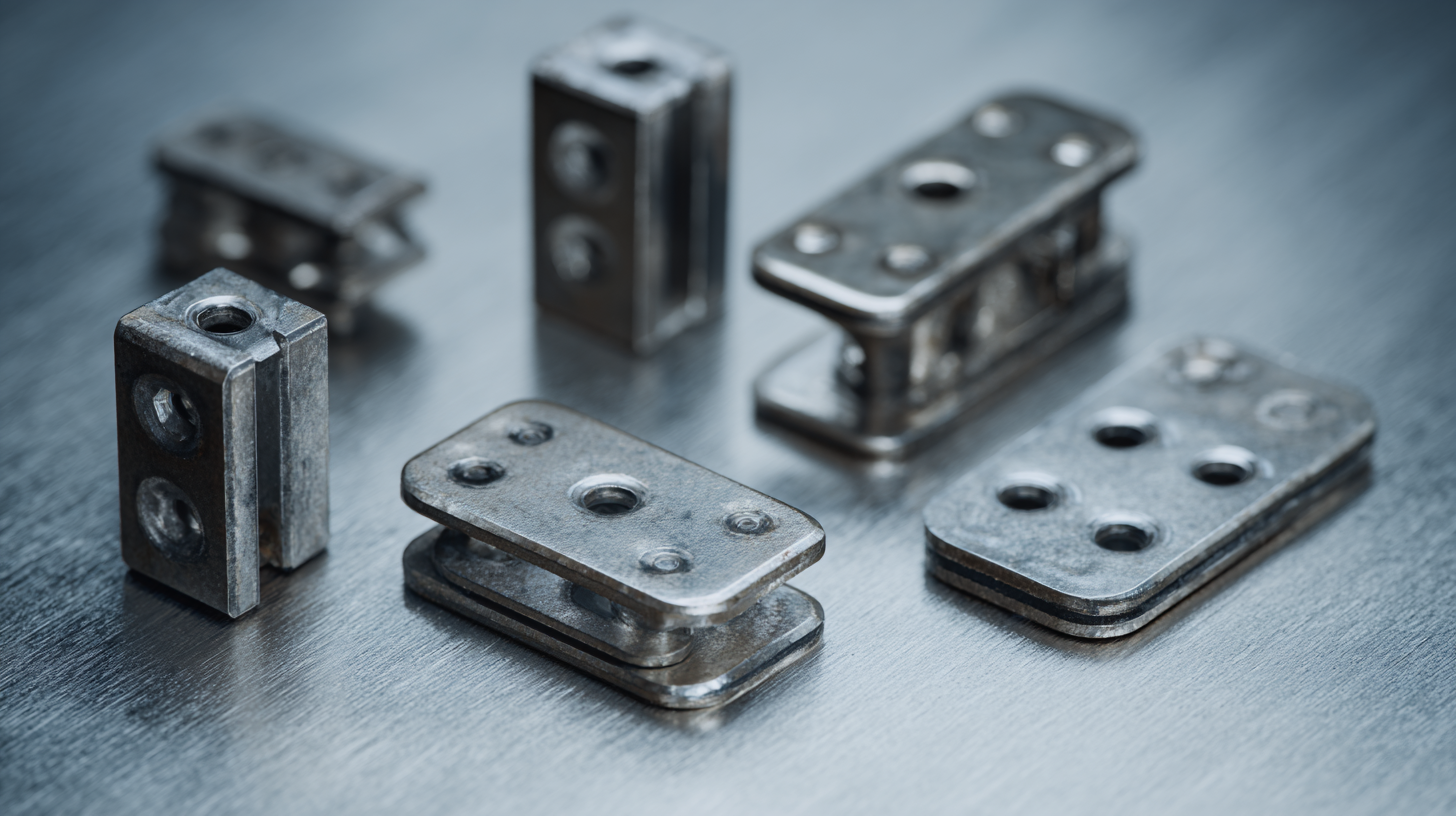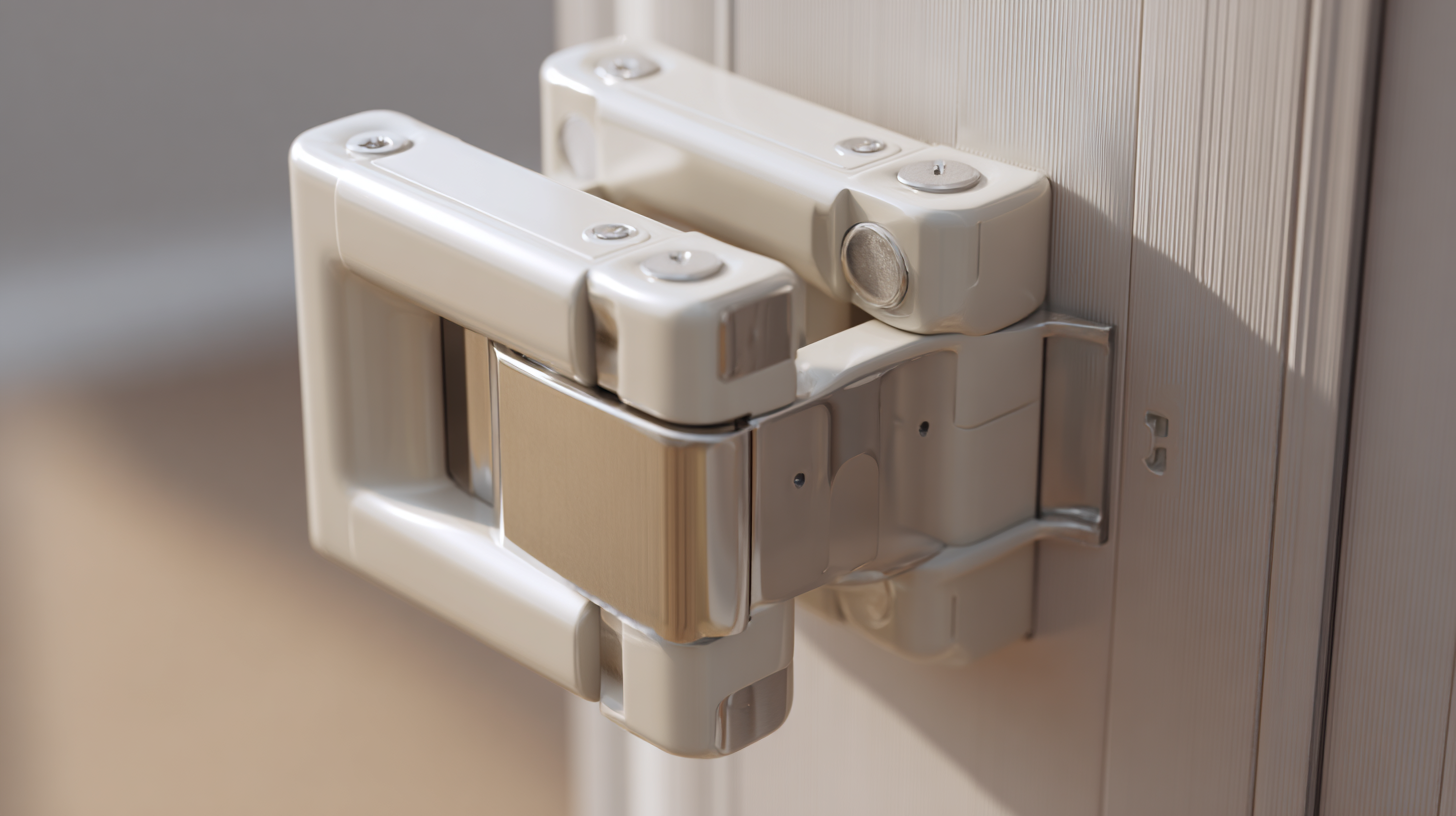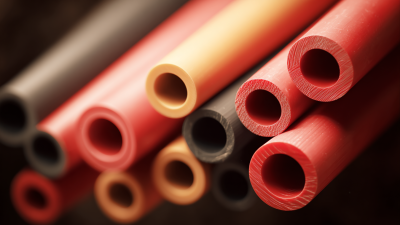Exploring the Benefits of Plastic Hinges: Durability and Cost-Efficiency in Modern Applications
In recent years, the demand for plastic hinges has surged, driven by their remarkable durability and cost-efficiency that meet the evolving needs of various industries. According to a report by MarketsandMarkets, the global plastic hinge market is projected to grow at a CAGR of 6.5% from 2023 to 2028, reflecting the increasing preference for lightweight materials in furniture, automotive, and electronic applications.
 Unlike their metal counterparts, plastic hinges offer resistance to corrosion, low maintenance requirements, and enhanced design flexibility, making them an excellent choice for modern manufacturing. Additionally, the ability of plastic hinges to withstand extreme temperatures and environmental conditions positions them as a reliable solution for both indoor and outdoor uses. This exploration will delve deeper into the benefits of plastic hinges, underscoring their pivotal role in advancing efficiency and sustainability in contemporary designs.
Unlike their metal counterparts, plastic hinges offer resistance to corrosion, low maintenance requirements, and enhanced design flexibility, making them an excellent choice for modern manufacturing. Additionally, the ability of plastic hinges to withstand extreme temperatures and environmental conditions positions them as a reliable solution for both indoor and outdoor uses. This exploration will delve deeper into the benefits of plastic hinges, underscoring their pivotal role in advancing efficiency and sustainability in contemporary designs.
Understanding the Composition and Manufacturing Process of Plastic Hinges
Plastic hinges are increasingly recognized for their robustness and cost-effectiveness, making them a preferred choice in various modern applications. The composition of plastic hinges typically involves high-performance thermoplastics, such as polycarbonate or nylon, which provide significant resilience against impact and environmental stressors. These materials are lightweight yet strong, offering high tensile strength and flexibility that allow for repeated movements without wear. Additionally, the use of additives can enhance properties like UV resistance, further extending the lifespan of these hinges in outdoor settings.
The manufacturing process of plastic hinges involves advanced techniques such as injection molding. This method allows for precision in creating intricate designs while promoting mass production efficiency. During the molding process, the chosen thermoplastic resin is heated until it becomes pliable, then injected into a mold where it cools and solidifies into the desired shape. This process not only optimizes consistency in quality but also enables the production of complex hinge structures that might be challenging to create with traditional metal hinges. Overall, the combination of durable materials and innovative manufacturing methods contributes significantly to the growing popularity of plastic hinges in various industries.
Exploring the Benefits of Plastic Hinges: Durability and Cost-Efficiency in Modern Applications
| Attribute | Details |
|---|---|
| Material Composition | Polypropylene, Polycarbonate, or Nylon |
| Durability | High resistance to wear, impact, and environmental factors |
| Temperature Resistance | Operates effectively in temperatures ranging from -40°C to 80°C |
| Cost Efficiency | Lower manufacturing costs compared to metal hinges |
| Weight | Up to 75% lighter than traditional metal hinges |
| Applications | Used in furniture, automotive, appliances, and electronics |
| Manufacturing Process | Injection molding for precision and efficiency |
| Environmental Impact | Recyclable materials may reduce overall ecological footprint |
Analyzing the Durability of Plastic Hinges Compared to Metal Alternatives
When it comes to selecting the right hinge for various applications, durability is a critical factor. Plastic hinges have gained attention for their ability to withstand wear and tear, particularly in environments that may corrode or damage metal alternatives. Unlike metal hinges, which can rust or weaken over time, plastic hinges offer excellent resistance to moisture and chemical exposure, making them ideal for use in settings such as kitchens, bathrooms, and outdoor installations.
**Tip:** When choosing plastic hinges, consider the environmental conditions they'll face. Ensure the material is suited for high humidity or chemical exposure to prolong longevity.
Additionally, plastic hinges are lightweight yet robust, and they can easily handle significant stress without bending or breaking. This strength combined with the flexibility of design makes plastic hinges a practical choice across diverse industries, from automotive to furniture manufacturing. Their ability to maintain structural integrity without requiring regular maintenance or replacement further highlights their cost-effectiveness in the long run.
**Tip:** Always check the load capacity of the plastic hinge to ensure it meets the demands of your application. Opting for hinges rated for higher loads than necessary can provide an extra safety margin.

Cost Comparison: Long-term Savings of Plastic Hinges in Various Applications
Plastic hinges have emerged as a viable alternative to traditional materials, particularly when evaluating cost-efficiency over time. Unlike metal hinges, which can be subjected to rust and wear, plastic hinges offer remarkable durability in various environments. This resilience translates to lower maintenance costs and replacements, making them a worthy investment for long-term applications. For industries that require frequent usage or are exposed to harsh conditions, the longevity of plastic hinges can lead to significant savings.
When conducting a cost comparison, the initial lower price of plastic hinges becomes even more attractive. While metal hinges might seem more robust at first glance, the ongoing expenses linked to upkeep, replacement, and potential downtime often outweigh the initial savings. Moreover, as organizations increasingly seek innovative solutions to optimize their operational costs—mirroring the trends seen in generative AI technologies—a careful examination of the economic advantages of plastic hinges could reveal a strategic pathway to enhanced profitability.
Industries considering a transition to plastic hinges could discover a more sustainable and economically sound approach to their operational needs.
Industry Applications: Where Plastic Hinges Excel in Performance and Efficiency
In modern industrial applications, plastic hinges are gaining recognition for their superior performance and efficiency. As companies strive to enhance their operational workflows, the use of plastic hinges offers a practical solution for improving product durability while significantly reducing costs. For instance, a recent study from a reputable manufacturing report highlighted that plastic hinges can withstand extreme temperatures and corrosive environments, making them ideal for applications in sectors such as automotive, aerospace, and consumer electronics.
Moreover, the integration of AI agents into corporate environments is reshaping how industries perceive efficiency. As companies invest in AI to streamline processes, the benefits of utilizing plastic hinges emerge more prominently. These hinges not only lower production costs by being more lightweight but also decrease the need for frequent replacements due to their robust nature.
According to market research, the global plastic hinges market is expected to grow at a CAGR of over 5% through the next five years, reflecting the increasing demand across diverse sectors. This trend signifies a shift toward more sustainable and economically viable manufacturing solutions, where plastic hinges excel in both performance and cost-efficiency.
Environmental Impact: Sustainability Benefits of Using Plastic Hinges in Manufacturing
The shift towards sustainability in manufacturing has led to increased interest in alternatives to traditional materials, particularly in the use of plastic hinges. These hinges not only offer durability and cost-efficiency but also align with the growing demand for environmentally conscious solutions. As industries grapple with the environmental challenges posed by plastic, opting for plastic hinges crafted from recycled materials can significantly reduce the overall carbon footprint associated with production.
Moreover, the sustainability benefits extend beyond the initial manufacturing phase. By utilizing plastic hinges in various applications, companies can minimize waste and engage in more circular business models. This shift is particularly pertinent in sectors like packaging, where the movement towards refillable and recyclable solutions is gaining momentum. As brands seek to address consumer concerns regarding single-use plastics and their environmental impact, incorporating sustainable materials and practices in every aspect of production, including essential components like hinges, becomes crucial for fostering a greener future.





